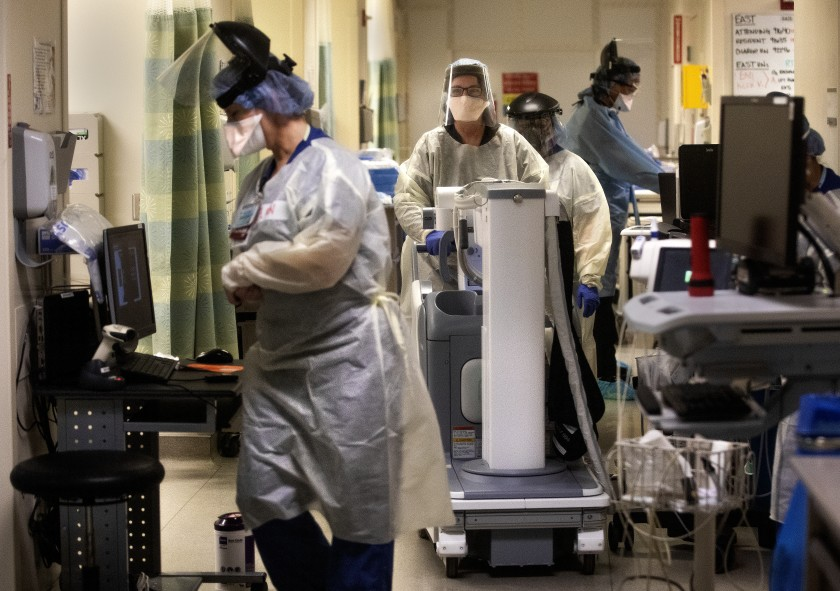Coronavirus developments leave many countries struggling with growing cases
by Natalie Maronas and Kiera Cerino

As the months have passed on, the severity of the pandemic Covid-19 has made massive waves over all lives across the globe. While work has been made developing a vaccine, the easily contagious spread has left many major countries struggling to keep its people safe. As of May 1st, there are a total number of 3,274,747 confirmed cases of Covid-19 and 233,792 deaths globally.
With over three million cases of the coronavirus worldwide, many countries have been struggling to keep the pandemic contained while also attending to those infected. With the number of cases growing since February, the number of people affiliated with the virus and the calculations released to the public has raised concern for the many others under quarantine. As the numbers grow, many still try to stay hopeful for how the virus will regress in the future.
“On the national level, I don’t think the federal government can be doing very much to enforce measures to prevent the spread of the virus. Unfortunately, it is really up to states to slow the spread,” said senior Sierra Williams. “I really wish the federal government would be funding more testing and relief in more widespread areas that are struggling more than just virus hotspots like New York.”
In December 2019, cases of the novel Coronavirus, Covid-19, started to become prominent in China. However, at this time, there had been no official issuing about health concerns that were released to the public. After realizing the health concerns this virus could cause, China’s government put in place better hospital management to help care for the growing number of people with the virus. This allowed for the quarantine and infection rates to drop by ten percent. On Dec. 31, China’s government began issuing quarantine on the virus and the World Health Organization (WHO) was informed of the development of the virus. However, the virus had already begun its spread throughout the world.
“The way the US is handling the situation is different than the other countries by the US being slower to close down a lot of the public places and by China being quicker to build more hospitals and cure more people,” said junior Tianna Garbutt. “The late response to the virus in the US caused more people to be exposed and at risk of getting it.”
In late January, the first people in the United States tested positive for the virus. This quickly spread, leaving the nation with the highest rate of people infected and is the only country that continues to rise in the number of cases. Out of the 1,100,706 total cases, 904,305 are active as doctors struggle to have the infected recover at a faster rate. The US also had the newest one-day high for the number of deaths, being 1,786 deaths on Apr. 7. Additionally, New York has been suffering as shown from its recalculated death toll of 18,330 people out of 304,693 total cases according to The NY Times. New Jersey has also had a total of 118,652 total cases, with 18 other states having more than 10 thousand cases. With this, the U.S. rose to have the most number of deaths with 63,851. States like Georgia, however, have begun to reopen, leading to uncertainty over safety amongst the still-growing pandemic.
“Cases have grown more quickly because of the amount of freedom the government is giving us during this leading to people who have the virus to spread freely and people who aren’t taking more precautions to give the virus. Even the people who are taking precautions are still at risk,” Williams said. “Not to mention, the United States is huge and society is built to come in contact with one another which isn’t great for global pandemics. Everyone is at risk and so much unknown about the virus to definitively end its spread is what leaves the US with the quickest growing number of cases.”

Other countries have also been massively struggling with the virus with their number of cases and deaths. Italy has the highest death rate out of all other countries with 13.1 percent, with it now having 27,967 deaths out of 205,463 total. The spread has occurred due to two Chinese tourists transferring the virus in Rome, its large older population has been under danger of the virus. Spain also has the second largest number of total cases with 215,216 and the third-largest number of deaths with 24,824. Even with these numbers, there is still hope for how Covid-19 will be managed in the future as many people from these countries follow intense quarantine procedures. As of now, with around 88,423 total cases and 81,785 recovered, as well as many other unaccounted deaths in homes and on the street, China has shown to be progressing towards overcoming the virus’ damages. Wuhan had also lifted its quarantine on Apr. 8, showing hope for fewer cases to come.
“The measures that are necessary in order to decrease the number of cases are to stay inside and only leave the house to get necessary supplies and food,” Garbutt said. “Also, keeping your distance with other people is important as well because this is a very contagious virus and staying inside will prevent you from attaining it and allow you to stay safe.”
Since many areas are beginning to reopen and move away from stay at home orders, as well as having pressure on the World Health Organization from other countries, predictions as to how Covid-19 will be managed are unsure. As people wait in quarantine and attempt to avoid contagion, multiple medical professionals continue to work vigorously in slowing down the number of cases from rising.
“The measures currently in place nationwide to stop the spread of the coronavirus are very effective since we can’t have people being in risk of attaining the disease by going to schools, universities, malls, movies or other public areas,” Garbutt said. “Staying at home and only leaving to get necessary supplies is what will help stop the growth of the virus.”
